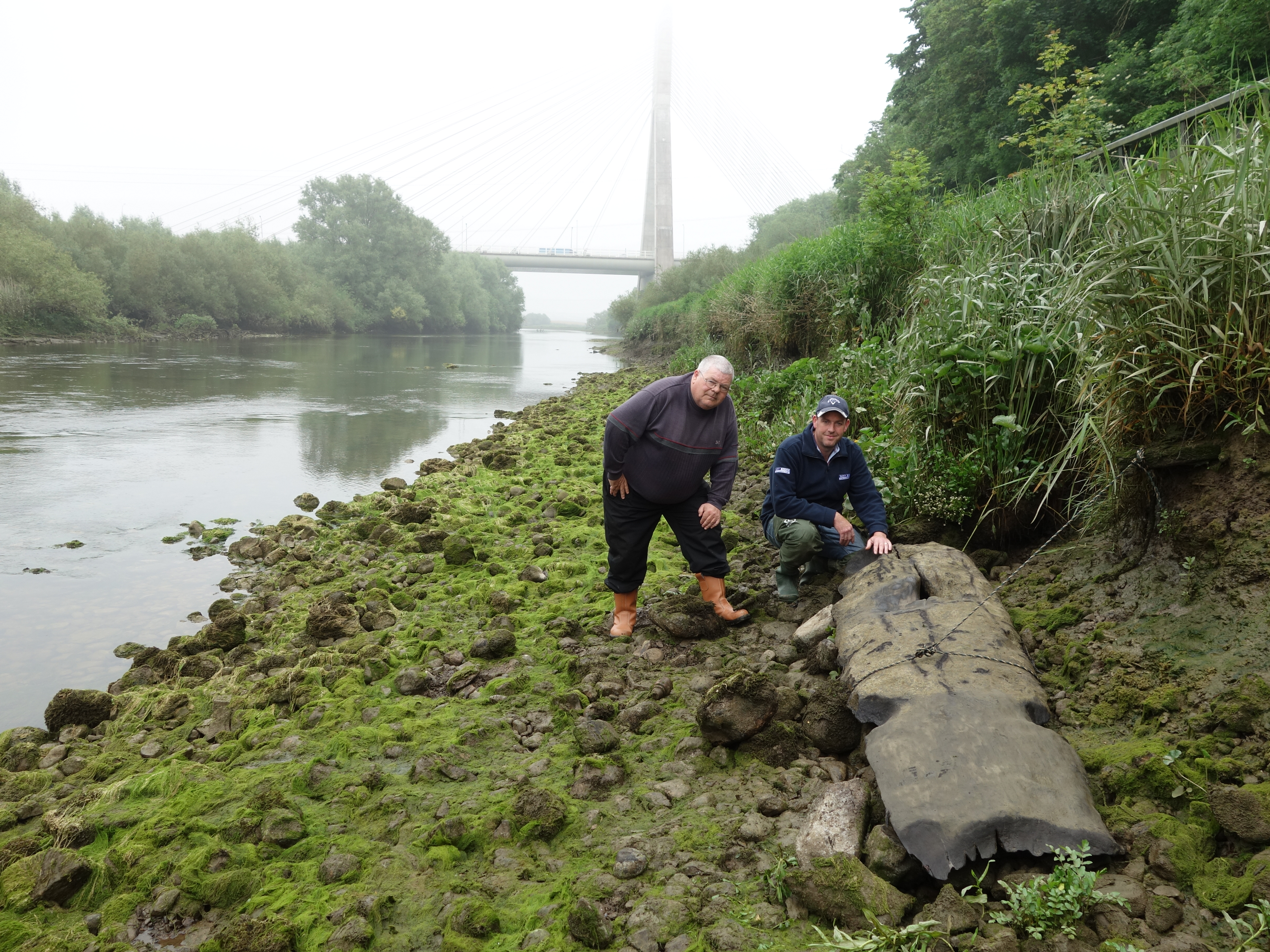
Scientific dating has confirmed that the remains of a logboat found in the River Boyne close to the Brú na Bóinne World Heritage Site dates to the Neolithic period, over 5,000 years ago.
The prehistoric logboat was found in June 2016 by four local anglers while fishing on the river at Oldbridge, County Meath. Stephen Murphy, Kieran Mahar, William Gregory and David Johnston immediately reported it to the heritage authorities.
The remains of the vessel consist of a 3m length of wood which would have formed the base of the boat. It is estimated that the logboat was originally more than 4m long, shaped out of the trunk of an oak tree using stone axes.
This discovery is one of 11 logboats found in the River Boyne, though this is the first boat found to date to the Neolithic period – a sample of the wood has very recently been radiocarbon dated to between 3,300-2,900BC. This is the period of the construction of the great passage tomb complexes of Knowth, Dowth and Newgrange.
The National Monuments Service Underwater Archaeology Unit and the National Museum of Ireland collaborated in recording the boat and carefully removing it from the river bed to the museum facilities, where it is currently undergoing conservation.
Minister Madigan said:
I want to sincerely thank all involved for reporting this discovery so quickly, which has allowed for its care and ongoing conservation and for this exciting new scientific date to be obtained. This new knowledge adds to the wonderful archaeological discoveries made this summer across Brú na Bóinne and enhances our understanding of the people within this special landscape, so dominated by the great River Boyne which would have played such a central part in their lives.
The importance of this discovery and the scientific date which has now been obtained for it lies in its contemporaneity with the building of the Great Passage tomb of Newgrange and the other wonderful passage tombs that dominate our World Heritage Site of Brú na Bóinne. It is tempting to ponder the part such a vessel might have played in the construction of these burial monuments and the lives of those who built them, in ferrying people along the river, and transporting materials and stones used to build the great tombs.
Details will be added to the Department’s online Wreck Viewer which launched earlier this year and which helps promote a wider appreciation of Ireland’s maritime and riverine archaeology and the important role boats and ships played in the development of our island society over millennia.
The Wreck Viewer is a free-to-use digital service provided by the National Monuments Service of the Department of Culture, Heritage and the Gaeltacht. It has been developed to facilitate easy access to the National Monuments Service’s Wreck Inventory of Ireland Database (WIID) and to complement the existing Historic Environment Viewer which provides access to the databases of the Sites and Monuments Record (SMR) and the National Inventory of Architectural Heritage (NIAH).
The Wreck Viewer displays wrecks for which we have a recorded location and these are represented on the map canvas as red dots. The red dot equates with the known approximate centre point of the wreck and is not indicative of its geographic or spatial extent. Wrecks with known locations account for approximately 22% (update and check) of the total number of records contained in the WIID; there is data held within the WIID on a large number of wrecks for which we have no precise recorded location, co-ordinate or known extent. Of the approximate 18,000 records only 4,000 have precise locations leaving approximately 14,000 wrecks in our database for which a location has yet to be determined.
https://www.archaeology.ie/underwater-archaeology/wreck-viewer